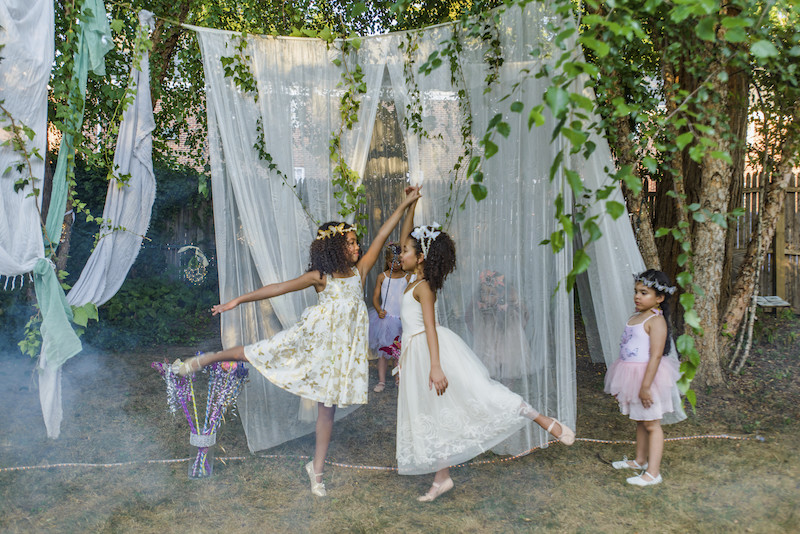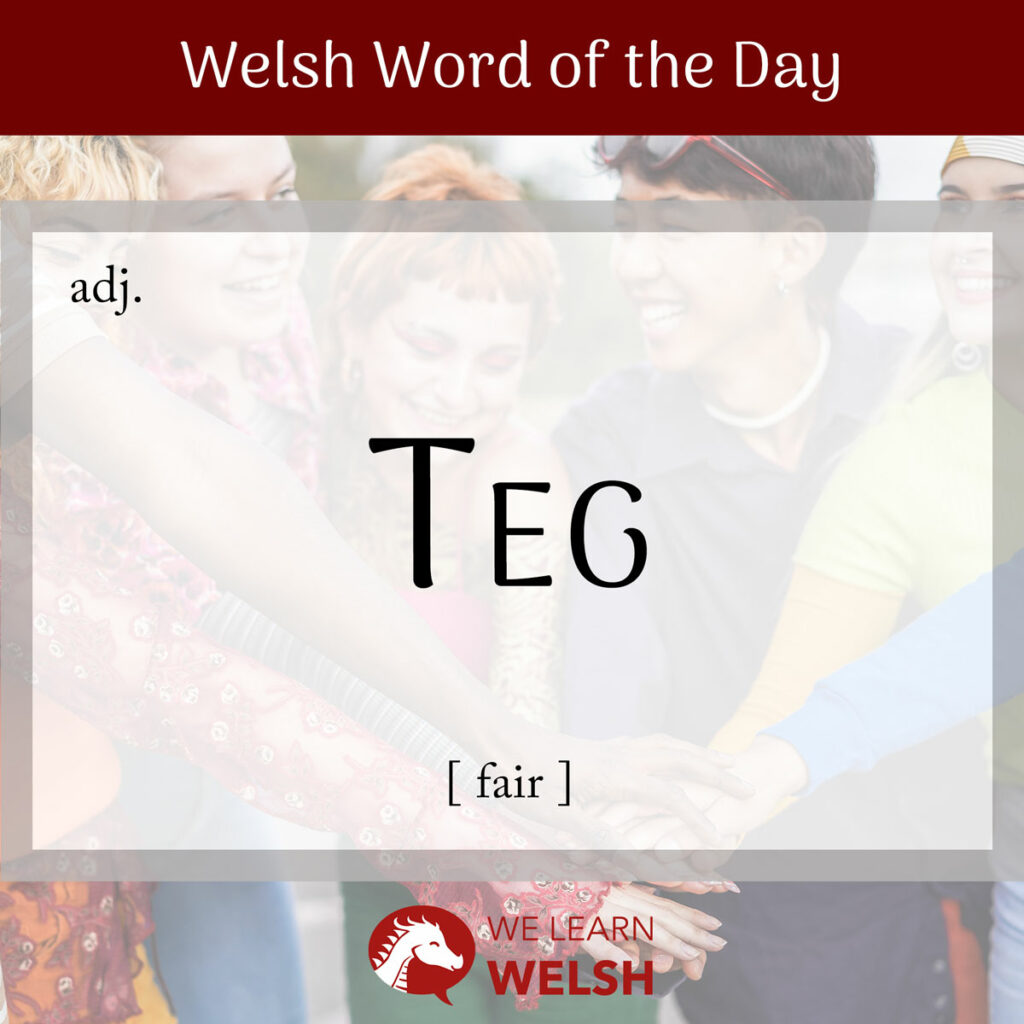Like its English equivalent fair, the Welsh word teg has a variety of meanings. It can mean fair as in just or equitable, but can also refer physical beauty and pleasantness, or even just a particularly nice day. Used in a lot of literature and poetry, it’s a word with a significant place in Welsh culture.
teg
fair
As with many words in Welsh, it’s hard to trace its exact etymology. However, it probably comes from the proto-Celtic root *tekos, which is also the ancestor of the Irish word éidigh, meaning the exact opposite, ugly.
Actually, teg itself plays a part in the etymology of another important Welsh word, which is tegan (toy). Tegan comes from combining teg with the diminutive suffix –an, so literally, it would be best translated as little pretty thing.
Tegan can also be used as a term of endearment or as a girl’s name. Speaking of which, Tegwen, which comes from combining teg with gwen (the feminine form of gwyn, white or blessed), is a popular feminine personal name in Wales.
This is how teg mutates:
Soft mutation
deg
Nasal mutation
nheg
Aspirate mutation
theg
To compare different degrees of tegwch (fairness), you can use the comparative forms teced (equally fair), tecach (fairer), and tecaf (fairest).
And there are also plenty of synonyms for this useful word. For example, hardd and prydferth are good translations of fair as in beautiful, and if you’re talking about justice and equity, you could also use cyfiawn (just, legitimate) or gonest (honest). Of course, many things in life are unpleasant or even unjust, so the antonyms annheg (unfair), tueddol (biased) and hyll (ugly) may be just as handy…
There is actually a third usage of this word—as an intensifier, similar to very or meaning complete / completely. This appears most often in set phrases, such as methu’n deg (to completely fail at something) or ar y dechrau’n deg (at the very beginning).
In both of these expressions, teg has become deg, because it’s taking a soft mutation after the word yn.
Here are some more words and phrases that use the word teg in its various meanings:
- araf deg = very slowly and gently
- gwylltio’n deg = to become very angry
- tywydd teg = fine weather
- gair teg = a euphemism
- gwên deg = a false smile
- yn union deg = straight away
- tegeirian = orchid (literally pretty-pretty)
- trwy deg = by fair means
- chwarae teg = fair play

ln some parts of Wales, the character Siôn Chwarae Teg (fair-play John) has historically been used to personify the idea of fairness and justice. For example, the saying mae Siôn Chwarae Teg wedi marw (fair-play John has died) laments perceived bias and injustice in society.
Enillodd e’r gêm yn hollol deg.
He won the game fair and square.
It would be impossible to write an article about the word teg without mentioning y tylwyth teg (the fair folk). Tylwyth teg refers to fairies – though perhaps not quite in the way we imagine them from cartoons and fairytales!
In Welsh llên gwerin (folklore), y tylwyth teg are pale-haired creatures who live underwater, underground and in cylchau’r tylwyth teg (fairy rings). They range from mischievous to downright nasty, playing tricks on unsuspecting humans, luring travellers into their mysterious world, and even stealing human babies.
Interestingly, the word tylwyth comes from the same root as teulu (family), and probably had the same meaning in Middle Welsh.
This is around the time that the term y tylwyth teg first surfaced. Although these folktales, and likely the phrase itself, are probably older than this, the words were first used by 14th century poet Dafydd ap Gwilym in a comic story where the protagonist is led astray by tylwyth teg whilst seeking out his lover.
There are a few other common names (and geiriau teg, euphemisms!) for the fair folk, like bendith y mamau (the mothers’ blessing), plant Rhys Ddwfn (the children of Rhys the Cunning), gwyllion (the wild ones) and ellyllon (the goblins / the elves / the demons). And the same creatures appear in the cultures and languages of Ireland, Scotland and Cornwall too.
Welais i un o’r tylwyth teg yn yr ardd.
I saw a fairy in the garden.
Whatever they’re called, Celtic folklore recommends a few methods of safeguarding yourself from harm at the hands of y tylwyth teg. Wearing your clothes inside out is sure to keep them away, as is use of the protective metal haearn (iron).
Some households may have left food offerings to y tylwyth teg in an attempt to appease them. However, if you ever find yourself caught in the middle of a wild fairy ball, any food they offer should certainly be declined. Take it, and you’ll be doomed to remain in the fairy court forever…


